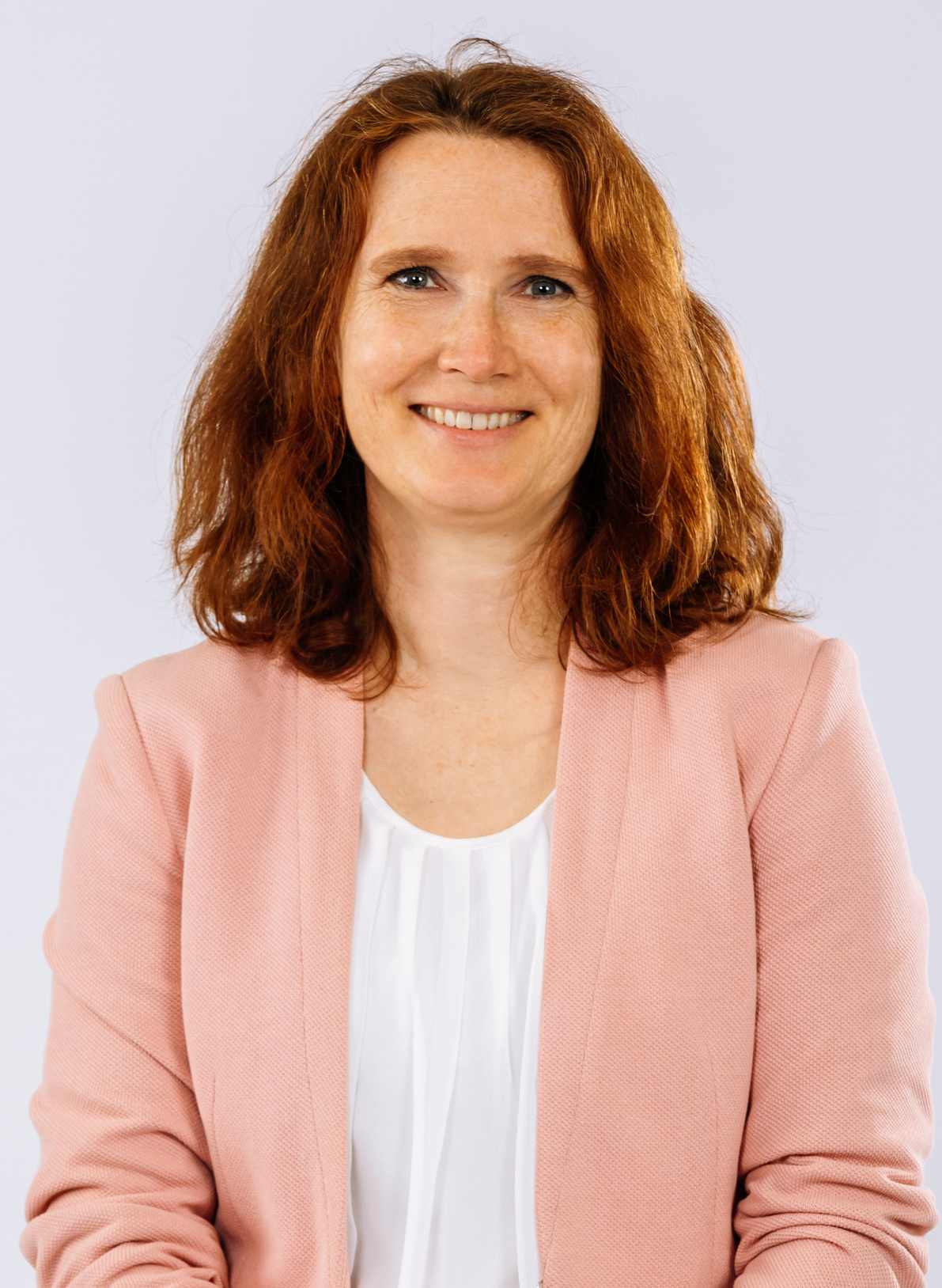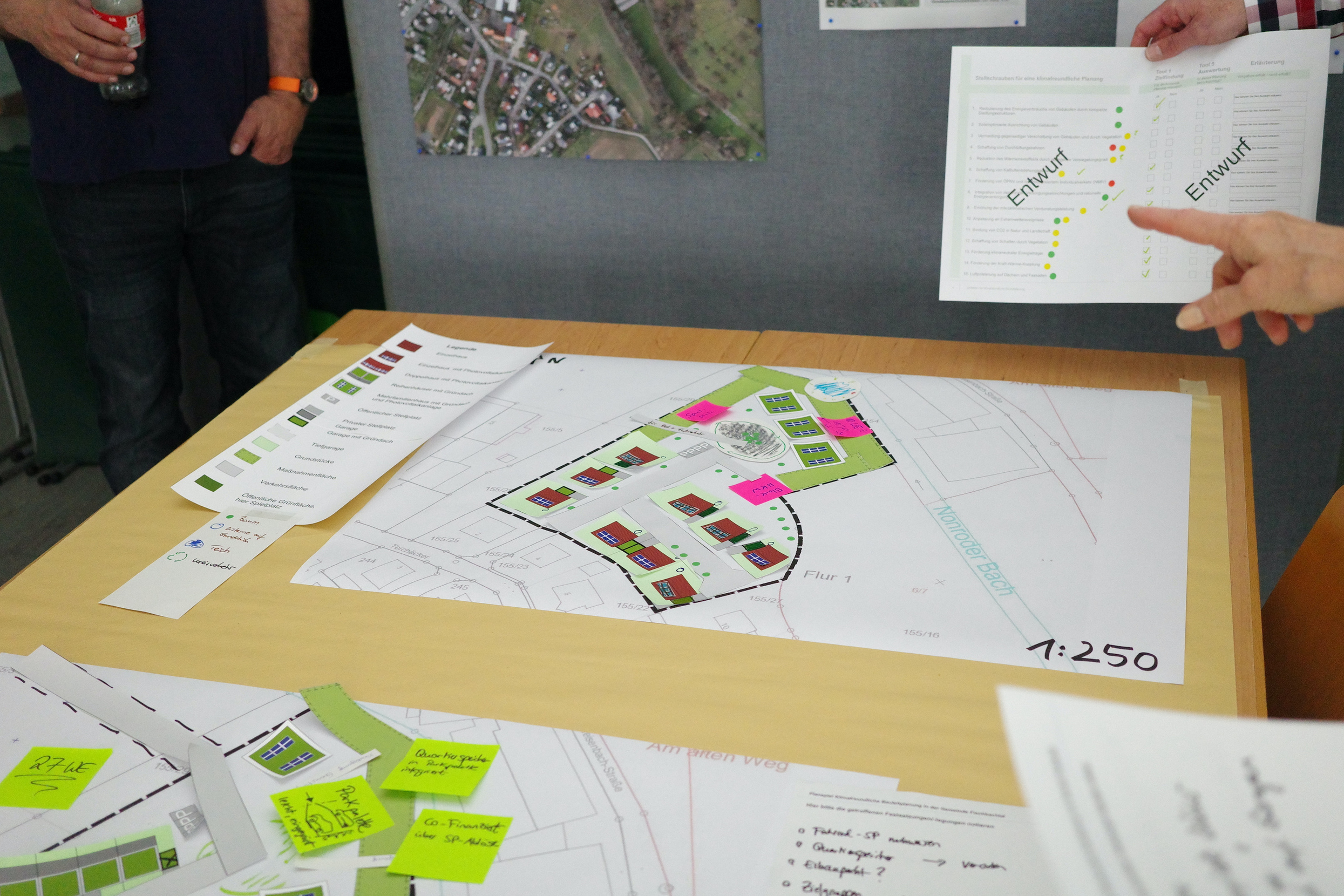Bauleitplanung EN

Scientists sit in ivory towers? A transfer project with Fischbachtal, a municipality on the edge of the Odenwald, disproves this hackneyed cliché. With just under 3,000 inhabitants, Fischbachtal is the smallest municipality in the administrative district of Darmstadt-Dieburg and a 30-minute drive from Darmstadt. It is rural, tranquil – and exemplary! At the end of September, the municipal council unanimously decided to revisit its urban land use planning – with the help of a special kit, the “Toolbox for Climate-Friendly Urban Land Use Planning”. This toolbox is an outcome of the municipality’s collaboration with a team from h_da – but not the only one. In this interview with impact, Birte Frommer, Professor for Spatial and Environmental Management, talks about the project and a process with lighthouse character.
Interview: Daniel Timme, 22.11.2024
impact: Professor Frommer, how did this collaboration come about?
Professor Birte Frommer: During the lockdown in 2020 due to the coronavirus pandemic, Philipp Thoma, Mayor of Fischbachtal, gave an interview as part of a student project. When the municipal council then decided at the end of that year to develop guidelines for climate-friendly urban land use planning, he came up with the idea of bringing us on board.
impact: In what way?
Frommer: In a phone call in January 2021, I advised Philipp Thoma against commissioning a planning office to develop the criteria and instruments for the guidelines. The result would presumably have been a glossy brochure. But if the people in politics and administration are not involved, do not understand what’s going on and there is no process for putting the idea into practice, that would have been a waste of money, which is why we developed an alternative plan. One element was professional input from the university. The other was a working group across all political parties, which was set up in order to involve the municipal council.
impact: Who else from h_da was involved?
Frommer: Professor Anja Hentschel from the Faculty of Social Sciences was closely involved and a very valuable member of our interdisciplinary team. As a specialist in environmental and energy legislation, she knows how laws are interpreted in practice. Iris Behr, our research associate at the Faculty of Civil and Environmental Engineering, was an important pillar. She is highly experienced in municipal affairs, works as a town councillor on a voluntary basis and has an extensive political network. And our three students, Sina Wilhelm, Lea Kallendrusch and Artem Schewtschenko, performed an enormous amount of work – at different times, sometimes overlapping – and really identified with the task.
impact: Did you also belong to the working group?
Frommer: We still do! The working group has between 12 and 14 members, including the mayor, the deputy mayor and the head of the environment department. Each of the four political parties on the municipal council nominates a member. Our students have all participated for at least the duration of their Bachelor’s and Master’s theses. Anja Hentschel, Iris Behr and I have been involved throughout.
About Birte Frommer
Birte Frommer has taught and conducted research at h_da’s Faculty of Civil and Environmental Engineering since 2014, where she is Professor for Spatial and Environmental Management. Frommer studied geography, geology and landscape planning at TU Darmstadt and Goethe University Frankfurt. Before joining h_da, she worked, among other places, at the “Infrastruktur & Umwelt” planning office. Birte Frommer is currently conducting research as part of the collaborative project “Governance der Gebäudemodernisierung in kleinen und mittleren hessischen Kommunen” (Governance in Building Modernisation in Small and Medium-Sized Hessian Municipalities) (January 2023 to February 2025).
impact: Can you please describe the collaboration?
Frommer: From the summer of 2021 onwards, Sina Wilhelm developed the “Guidelines for Climate-Friendly Urban Land Use Planning” as part of her Master’s thesis. We discussed these guidelines at four meetings of the working group until we arrived at the finally agreed version in January 2022. But we wanted to make it even more tangible, so we dedicated further Bachelor’s and Master’s theses to it and developed our toolbox. The working group continued – and that generated tremendous learning effects for everyone.
impact: For example?
Frommer: The students were obliged to leave their comfort zone. As far as the content was concerned, everything was perfectly clear. But now they had to explain it to the decision-makers and tie it into the political consultation process. For some members of the municipal council, it was a real eye-opener: ‘We can control lots of things – but we also need to think about how much we want to dictate.’
impact: What does the political consultation process comprise?
Frommer: The climate-friendliness of urban land use planning is only one dimension. The topic is much broader. It is also about technical and social infrastructure, for example. There are conflicting objectives. The municipal council must be fair when weighing up these various concerns.
impact: Please tell us about the toolbox.
Frommer: First of all, the toolbox comprises five tools that help to define climate-centric goals as the basis for development planning. There is further room for new instruments: the criteria are expandable – particularly as technical and legal requirements change. Tool 1 is for setting objectives. Tool 2 examines the general framework. Tool 3 is the centrepiece: the catalogue of specifications. Tool 4 is the guidelines originally developed, together with a checklist that is particularly helpful for comparing alternatives. Tool 5 is for analysing impact and thus closes the loop back to Tool 1.

impact: Let’s start at the beginning…
Frommer: Tool 1 contains a non-exhaustive list of 15 levers for climate-friendly urban land use planning. These are, for example, adaptation to extreme weather events, reduction of the urban heat island effect, promotion of climate-neutral energy sources or optimised solar orientation of buildings.
impact: Meaning that specifications are defined for the area to be planned?
Frommer: Exactly. And these are fed into Tool 3, the “Interactive Specification Catalogue for Development Plans”. Artem Schewtschenko developed it in his Bachelor’s thesis and diligently conducted a lot of research and analysis work. The tool clusters six main topics: water balance; energy; building fabric and configuration; large green areas and open spaces; small green areas; and traffic. It then breaks these down into sub-topics, possible specifications, legal basis and impact. Decision-makers and planners can use this Excel-based tool to simulate various measures. It makes impact visible and delivers practical suggestions.
impact: Well, that clearly goes far beyond mere guidelines!
Frommer: Yes. In a Master’s project, Artem Schewtschenko developed the toolbox into what it is now. Nevertheless, we had the feeling at the beginning of this year that we needed to make it even better. We wanted people to see just how useful the tools are. It would have been a tremendous shame to introduce such a great process that it then not supported and approved. We had the idea of trying out the tools together in the working group in a business game. We wanted to show that the toolbox does not restrict people’s freedom to make their own decisions, but rather accompanies the decision-making process.
impact: Did you succeed?
Frommer: The business game in June was excellent – a key moment. We used the toolbox to plan a new development. The local politicians gave us their feedback: ‘For the first time, we were allowed to think about it right from the start: What should go there? And how do our ideas influence the subsequent plan?’ In the past, the municipal council was presented with a draft plan on which it was allowed to vote. At that stage, planning is already so far advanced that there is not much it can influence. The present policy decision constitutes a paradigm shift. Politics now comes into play much earlier. The business game allowed us to experience what this means in concrete terms as well as the tools’ impact.
impact: The guidelines and tools are intended for new development projects. What about building stock?
Frommer: Lea Kallendrusch focused on building stock in her Master’s thesis and developed this aspect further. The instrument relevant for such stock would be a design code, which does not yet exist in Fischbachtal. The working group dealt with this for six months but is not pursuing it further for the time being. A design code is a powerful instrument that can have great potential – but also a lot of potential for conflict.
impact: Is your work in Fischbachtal now completed?
Frommer: The unanimous policy decision by the municipal council at the end of September was confirmation of our work, a great moment for us all. But that is not the end of the project. On the contrary! Our toolbox is now being applied for the first time to the Teichäcker III development in Niedernhausen. This is the area for which Sina Wilhelm did the test planning and which we planned in the business game. What we produced together is now being put into practice – that’s great! The planning office commissioned with the project is working according to the specifications defined using the tools. The working group will introduce the planning office to the toolbox and actively help them to apply it in the urban land use planning process from December onwards. This will enable the planners to familiarise themselves in depth with the toolbox – and through the collaboration the politicians in the working group will experience the field trial.
impact: Are the tools suitable for other towns and municipalities?
Frommer: Yes, the toolbox as an instrument kit is generally applicable. Several municipalities in the region have already signalled their interest. Talks are already underway, and we are sure that it can be rolled out across the board. A well-designed business game would also have potential. There are also already ideas to extend the content to other areas and to develop the tools further.
impact: Four years of intensive collaboration – how do you see the relationship between cost and return?
Frommer: Such a project should not only be measured against the usual criteria of research evaluation. If we look at the learning processes, it is a successful, valuable project that fulfils our knowledge transfer mandate as a university. So much specialist knowledge is available – but it is too rarely applied in practice! Via such processes and over a longer period, we can transport this knowledge and make it understandable. I think that we will now be in a position, based on what we have developed, to engage more quickly with other municipalities. But something like this takes time – not least due to the various committees at municipal level. And the process must first establish itself. I am convinced that the tools and content alone will not achieve the goal – the learning processes are equally important. That is what happens with people and what remains.
Contact
Christina Janssen
Science Editor
Corporate Communications
Tel.: +49.6151.533-60112
E-Mail: christina.janssen@h-da.de
Translation: Sharon Oranski







